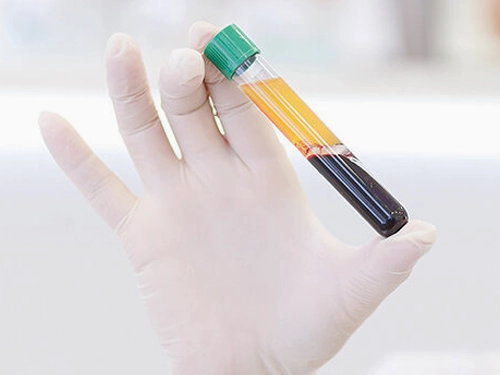
Innovating regenerative therapy platelet-rich plasma (PRP) has attracted a lot of attention recently due to its capacity to aid in tissue repair, rejuvenation, and healing.
PRP has been successfully used in a variety of medical and aesthetic applications, from hair restoration to skin rejuvenation, by harnessing the power of your body's natural growth factors. In-depth discussion of PRP's science, advantages, and how it can assist you in achieving your aesthetic objectives are provided in this article.
Platelet-rich plasma (PRP) is a concentrated form of your own blood's platelets, growth factors, and proteins. A small amount of the patient's blood is drawn, and it is processed in a centrifuge to separate the platelet-rich plasma from the other blood components to create PRP. Growth factors and other bioactive compounds are abundant in the resulting PRP solution and are essential to the body's natural healing and regenerative processes.
“The high concentration of growth factors in PRP is the secret to its regenerative properties. These proteins, known as growth factors, encourage cellular proliferation, differentiation, and growth, which in turn aids in tissue regeneration and repair. These growth factors can activate the body's natural healing response by being injected with PRP into particular treatment areas, leading to improved tissue health and function.”
The use of PRP therapy in a variety of therapeutic and esthetic procedures has been successful. Key advantages and applications of PRP include:
PRP therapy is a non-invasive, minimally invasive process that can be carried out in a medical or aesthetic clinic. The following steps are typically included in the process:
It's crucial to select a skilled and knowledgeable provider for your PRP therapy in order to guarantee the best results possible.
Here are some recommendations for choosing the best provider for your requirements:
Look for a board-certified medical professional, Plastic Surgeon or expert in aesthetic medicine who has a lot of experience in aesthetic procedures.
Inquire about the provider's success rates and patient satisfaction levels, as well as their training and certification in PRP procedures.
As these elements can affect the caliber and effectiveness of the procedure, find out what specific tools and methods were used to create the PRP.
Discuss your medical history, aesthetic goals, and any worries you may have with the provider. A thorough consultation will determine whether PRP therapy is the best option for your specific needs and assist in setting reasonable expectations.
PRP therapy results can vary depending on the patient and the particular treatment area. Within a few weeks to months after the treatment, patients can typically anticipate seeing noticeable improvements in hair growth, skin texture, and general tissue health.
To maximize your results and maintain long-lasting benefits, it's crucial to adhere to your provider's aftercare recommendations, which may include limiting your exposure to the sun and maintaining a healthy skincare routine.
To get the desired result, it might sometimes be advised to have more than one PRP session. Your healthcare provider will collaborate with you to create a personalized treatment plan based on your goals and your body's reaction to the therapy.
“By utilizing the body's natural healing processes to encourage tissue repair and rejuvenation, platelet-rich plasma (PRP) therapy offers a potent, all-natural solution for a range of medical and aesthetic concerns. You can decide whether PRP therapy is the best option for your aesthetic goals by understanding the science behind PRP, its advantages, and the significance of choosing the right provider. PRP can assist you in achieving a healthier, more youthful appearance that reflects your inner vitality with the right direction and care.”